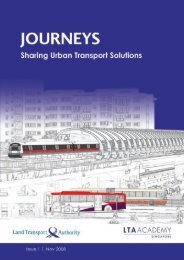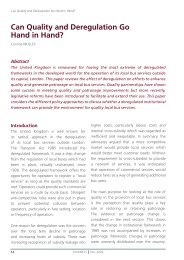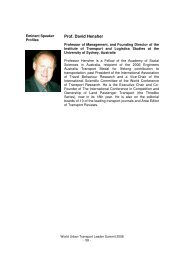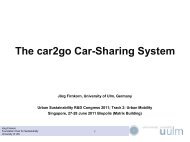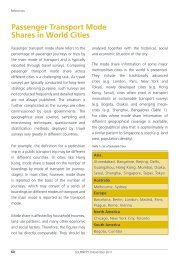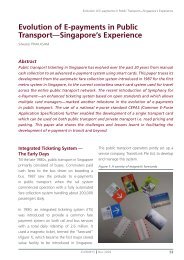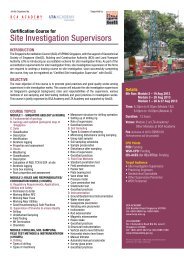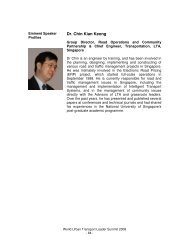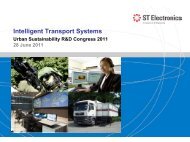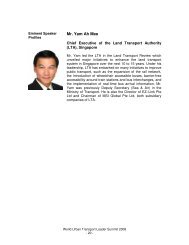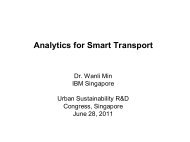Full Version - Issue 7 | November 2011 - LTA Academy
Full Version - Issue 7 | November 2011 - LTA Academy
Full Version - Issue 7 | November 2011 - LTA Academy
Create successful ePaper yourself
Turn your PDF publications into a flip-book with our unique Google optimized e-Paper software.
In Britain, bus services in some areas<br />
are monopolised by large operators<br />
after they priced out smaller<br />
competitors and fares would rise.<br />
Government Regulation of Fares<br />
and Services<br />
With privatisation of essential services,<br />
governments often have to be more involved<br />
in regulating monopolistic operators to prevent<br />
abuse of market power. They may have to<br />
regulate prices and service levels to ensure<br />
affordability and minimum service standards.<br />
Fare regulation involves the regulator<br />
controlling fares that the public transport<br />
operator could charge. The criteria for deciding<br />
an appropriate fare level could include operator’s<br />
costs, rate of return on assets, improvements<br />
in productivity and fare affordability. If such<br />
criteria are applied correctly, the resulting<br />
subsidy is optimal in terms of value for money.<br />
To prevent operators from cutting corners<br />
to increase profits, it may be necessary<br />
for regulators to specify minimum service<br />
standards that operators have to comply<br />
with or be penalised for non-compliance.<br />
The standards could include service coverage,<br />
frequency, crowding and vehicle breakdowns.<br />
To improve public transport accessibility,<br />
regulators may require that operators serve<br />
some unprofitable routes and off-peak hours<br />
as a condition for the rights to operate services.<br />
The success of government regulation requires<br />
that regulators be able to approximate the<br />
optimal level of fares and service standards.<br />
Optimal fares have to be affordable to most<br />
commuters, but allow operators to provide<br />
reasonable quantity and quality of services<br />
and earn adequate profits for shareholder<br />
dividends and capital investment. This is<br />
difficult due to lack of information. The public<br />
may also judge the success of the regulatory<br />
regime based on their perceptions. Public<br />
acceptance would drop if the operators are<br />
perceived to be making excessive profits from<br />
high fares or providing poor quality of service.<br />
Singapore’s current approach to public transport<br />
provision, which will be discussed below, is an<br />
example of government regulation.<br />
Competitive Tendering<br />
Competition is important to ensure that<br />
privatisation improves efficiency. Many cities<br />
have introduced competition for the market<br />
through competitive tendering (CT) of licences<br />
to operate public transport services for a<br />
specified duration, for example, 15 years<br />
to operate a rail line or 5 years to operate<br />
a package of bus services. Cherry-picking<br />
of profitable routes could be prevented by<br />
packaging unprofitable routes with profitable<br />
ones or by provision of government subsidies.<br />
Licences could be awarded based on a number<br />
of criteria, for example, track record, proposed<br />
fares and services, or required amount of<br />
government subsidies.<br />
JOURNEYS | <strong>November</strong> <strong>2011</strong><br />
Different Approaches to Public Transport Provision<br />
To prevent operators from cutting<br />
corners to increase profits, it may be<br />
necessary for regulators to specify<br />
minimum service standards that<br />
operators have to comply with or be<br />
penalised for non-compliance.<br />
35



